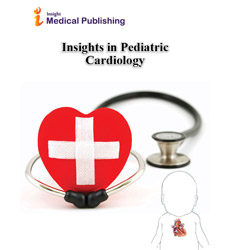Abstract
Calnexin overexpressing prevents cardiac fibroblasts activation and endoplasmic reticulum stress induced by TGFÎò1
Background Cardiac fibroblasts, making up more than 90% of the non-myocytes, play a major role in the normal and pathological cardiac function. Cardiac fibroblasts activation is a common pathological feature of some heart diseases such as cardiac hypertrophy, myocardial infarction (MI), and heart failure. It is characterized by excessive proliferation of fibroblasts and progressive accumulation of extracellular matrix (ECM) proteins secreted by fibroblasts in the myocardium, including collagen type I (Collagen I). Hypertrophic or Fibrotic cardiac muscle is stiffer and less compliant, contributing to the progression to heart failure. Although myocardial hypertrophy and fibrosis can be reversed in some cases, effective therapies remain largely elusive. Objective Calnexin is a lectin-like molecular chaperone protein on the endoplasmic reticulum. It is also an important protein on the mitochondria-associated endoplasmic reticulum membranes. Calnexin mediates unfolded protein responses, regulates the endoplasmic reticulum Ca2+ homeostasis, and Ca2+ signals conduction. In recent years, studies have found that calnexin plays an important role in heart diseases. This study aims to explore the role of calnexin in the activation of cardiac fibroblasts (CFs). Methods and results A transverse aortic constriction (TAC) mouse model was established to observe the activation of myocardial fibroblasts in vivo, and CFs activation model were established using TGFβ1 stimulation. Then, plasmid and adenovirus were respectively used to gene overexpression and silencing in CFs to elucidate the relationship between calnexin and CFs activation, as well as the possible underlying mechanism. We confirmed the establishment of TAC model by ultrasound, HE, Masson, Sirius red staining, and detecting the cardiac fibrosis marker expression in cardiac tissues. After TGFβ1 stimulated CFs, CFs activation, proliferation and migration were detected by quantitative PCR, Western Blot, EdU assay, and wound healing assay to confirm establishment of CFs activation model. The results showed that calnexin expression was reduced in both the TAC model and the CFs activation model. Overexpression of calnexin can relieve CFs activation, in contrast, silencing calnexin can promote CFs activation. Furthermore, we found that endoplasmic reticulum stress (ERS) was activated during CFs activation, and ERS was relieved after overexpression of calnexin. Conversely, silencing of calnexin, ERS was aggravated, consistent with the activated phenotype of CFs.
Author(s):
Geer Tian
Abstract | PDF
Share this

Google scholar citation report
Citations : 5
Insights in Pediatric Cardiology received 5 citations as per google scholar report
Insights in Pediatric Cardiology peer review process verified at publons
Abstracted/Indexed in
- Google Scholar
- Secret Search Engine Labs
Open Access Journals
- Aquaculture & Veterinary Science
- Chemistry & Chemical Sciences
- Clinical Sciences
- Engineering
- General Science
- Genetics & Molecular Biology
- Health Care & Nursing
- Immunology & Microbiology
- Materials Science
- Mathematics & Physics
- Medical Sciences
- Neurology & Psychiatry
- Oncology & Cancer Science
- Pharmaceutical Sciences

